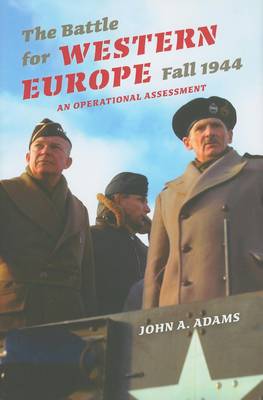
- Afhalen na 1 uur in een winkel met voorraad
- Gratis thuislevering in België vanaf € 30
- Ruim aanbod met 7 miljoen producten
- Afhalen na 1 uur in een winkel met voorraad
- Gratis thuislevering in België vanaf € 30
- Ruim aanbod met 7 miljoen producten
Omschrijving
This engrossing and meticulously researched volume reexamines the decisions made by Dwight D. Eisenhower and his staff in the crucial months leading up to the Battle of the Bulge. In late August 1944 defeat of the Wehrmacht seemed assured. On December 16, however, the Germans counterattacked. Received wisdom says that Eisenhower's Broad Front strategy caused his armies to stall in early September, and his subsequent failure to concentrate his forces brought about deadlock and opened the way for the German attack. Arguing to the contrary, John A. Adams demonstrates that Eisenhower and his staff at SHAEF had a good campaign strategy, refined to reflect developments on the ground, which had an excellent chance of destroying the Germans west of the Rhine.
Specificaties
Betrokkenen
- Auteur(s):
- Uitgeverij:
Inhoud
- Aantal bladzijden:
- 392
- Taal:
- Engels
- Reeks:
Eigenschappen
- Productcode (EAN):
- 9780253354358
- Verschijningsdatum:
- 9/04/2010
- Uitvoering:
- Hardcover
- Formaat:
- Genaaid
- Afmetingen:
- 147 mm x 236 mm
- Gewicht:
- 703 g

Alleen bij Standaard Boekhandel
Beoordelingen
We publiceren alleen reviews die voldoen aan de voorwaarden voor reviews. Bekijk onze voorwaarden voor reviews.











